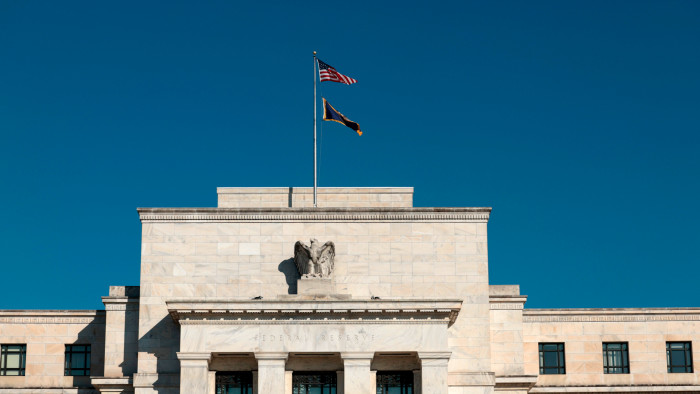Danger of defaults looms larger for private credit funds

Simply sign up to the Financials myFT Digest -- delivered directly to your inbox.
It should come as no surprise that private credit has ballooned as an asset class over the past 20 years. A market with as many monikers as it has — five and counting — clearly always had the scope to get bigger.
Whether known as private debt, non-bank lending, alternative lending, shadow lending, or private credit, the investment class has witnessed eye-popping growth in the space of two decades.
As other asset classes shrank during the global financial crisis, private credit took off. Banks battened down the hatches and reined in their lending to smaller and riskier borrowers, creating a funding gap that non-bank lenders readily stepped in to fill.
The result has been the creation of a burgeoning asset class for investors. It grew from just $41bn in December 2000 to $311bn by December 2010, according to figures from data provider Preqin. As of December 2021, it had swelled to $1.22tn.
After a long-running period of success, however, concerns are mounting that the twin threats of rising inflation and a global recession pose problems for an asset class that, with the exception of the Covid-19 pandemic, has yet to be properly tested.
Central banks around the world are now battling to fight inflation. The US Federal Reserve pushed up interest rates to their highest levels in almost 15 years at the end of September, while the Bank of England was forced to announce it would “not hesitate” to increase rates further after markets reacted badly to UK plans to cut taxes, many of which have since been reversed.
And, with German inflation running at just under 11 per cent, the European Central Bank raised interest rates by an unprecedented 75 basis points at the beginning of last month. In a statement, the ECB said that, “over the next several meetings”, it expects to hike rates further.
“A rising rate environment is new territory for many investors, who have grown used to falling and rock-bottom interest rates,” says Tamsin Coleman, a private debt specialist at consultancy Mercer.
She believes investors and managers of private debt funds will have to work hard to navigate the impact of rising rates, even though private debt is a floating-rate asset class that offers some protection from inflation.
“Returns have historically tracked in line with rising rates . . . but this is only part of the story, as rising rates will require borrowers to stump up more cash to service higher debt interest payments,” says Coleman.

The concern is that, if borrowers do not keep up with the increasing costs of servicing their debt — by either passing costs on to customers or absorbing them — investors in private debt funds will face higher default rates and, ultimately, losses.
“Non-accruals, problem loans and restructurings will rise as portfolio companies feel the impact of rising reference rates and debt service coverage levels [start to] thin,” says Clay Montgomery, senior analyst at Moody’s, the rating agency.
The result will be that the number of defaults will “rise over the next 12-18 months”, although this, he adds, is in the context of very low defaults in 2021 and the first half of 2022.
More from this report
Traders brace for further volatility as bond markets turn bearish
Emerging market bond slump creates opportunities for investors
Brussels urged to step up region-wide bond issuance
China fails to stem bond outflows as property woes persist
Social impact bonds gain ground in putting donor capital to work
Kirsten Bode, co-head of pan-European private debt at asset manager Muzinich & Co, agrees. “After a long period of abnormally low default rates, it is very possible that default rates will increase,” she says.
Yet relatively low default rates, even with a predicted rise, may render private credit a more desirable asset class in the eyes of some investors. The devil will then be in the detail for asset managers, with portfolio construction becoming increasingly important and investors being warned about the need to weed out the good from the bad.
“Ability to weather the upcoming market headwinds will vary manager by manager,” says Adam Wheeler, co-head of the global private finance group at Barings, the investment manager. “Those with a higher appetite for risk in their portfolios could struggle as a result of inflation and economic recession, [while] managers who remain towards the more ‘bank-like’ end of the risk spectrum should see significantly less disruption.”
He says highly defensive sectors, such as software and technology, business services, food and beverage, and healthcare will be sought after as a result.
Joe Abrams, Mercer’s head of private debt for Europe, adds: “Your enemy in this asset class is concentration risk — because it is credit and you ‘win by not losing’. Those that have failed to appropriately diversify their portfolios have the potential for returns to be eroded quickly.”
Comments